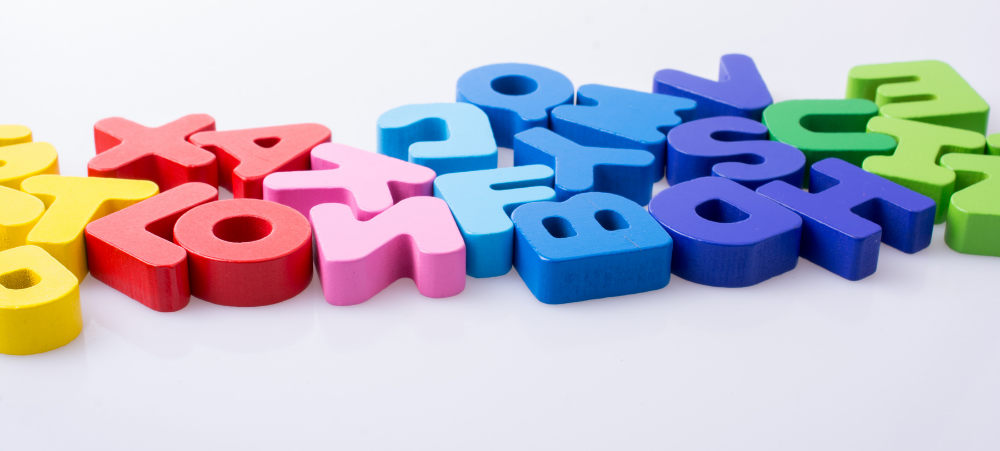Fun, easy and practical ways to stimulate your child’s language development by a speech therapist and mother.
We find ourselves in a situation, where our children are with us for a longer duration than the school holidays. In discussion with other mums, many are making the best of the current situation. We need to focus on the positives with an attitude of gratitude.
Children learn a great amount from observing others and is especially true when it comes to language learning. Your child’s vocabulary increases at a rapid rate. An average 2-year-old has a vocabulary of 50 words while a 4-year-old has a vocabulary of over 1000 words.
Your child may use phrases which you or other family members commonly say – even if it is not in the correct context. For example, my husband and I switch from speaking English to Afrikaans when we don’t want our 4-year-old to understand what we are say. When she recognizes that we are speaking a different language, she says “Asseblief!” with great excitement. This is most likely due to “Asseblief” being the most common Afrikaans word that we use.
If the thought has crossed your mind, “I wonder how I can stimulate my child’s language development without going bananas”, we present to you a recipe for success. Read until the end where we share with you a detailed explanation how to incorporate language stimulation while making a quick, simple and easy chocolate cake. This recipe is tried and tested – a definite winner in many homes. In the end, you may also say that language stimulation is indeed a piece of cake!
Each child may not have the same morning routine but we all do the same activities daily. These include waking up, brushing teeth, having breakfast, taking a shower and getting dressed.
Let’s examine each routine activity in greater depth. The main idea is to incorporate language stimulation in your routine so that you do not need to set aside specific time in the day. Let’s be honest, many of us don’t have free time or extra mental energy to add on to our daily routine. This does not mean that you need to be talking to your child the whole day. Use meaningful and language – rich sentences with a goal in mind. If you aim to teach your child their colours, let learning occur without making the process seem like a chore. Read further for fun, easy and practical ways to stimulate your child’s language while going about your normal daily routine.
Waking up
Upon awakening, your child may come out of his or her room in a range of moods. A typical child aged 4 years old may not remember exactly what day it is hence it would be beneficial to speak about the day, date etc. If your child is anticipating a certain date – explain how many sleeps / days more to go before a particular date or day of the week is reached e.g. Today is Wednesday, 4th September, tomorrow is Thursday 5th September and then it will be Friday 6th September and the day after will be Saturday 7th September. Use your fingers to count how many days away the anticipated date is – you can count forwards (Saturday is 3 days away) and backwards (tomorrow will be 2 days away and Friday will be 1 day away).
For your child/ren to visualize the days of the week, a better option is to make your own monthly calendar and change the date each morning with your child/ren. Basics to include are days of the week, dates of the month, name of the month, year, season and weather. A ready-made DIY magnetic calendar is available online from www.thespeechbubbleco.co.za
There are innumerable benefits of using a calendar or visual schedule which include:
- Understanding concepts before, after and sequence of events.
- Enhance mathematics skills (counting forwards, backwards, addition, subtraction).
- Learning days of the week and months of the year in a practical manner has great meaning and will be remembered easily.
Note – some experts believe that the ability to understand how many days there are from now until an event in future will only be fully understood when a child is between the ages of 7 and 10 years.
Brushing teeth
From personal experience with my 4-year-old daughter, getting her to brush her teeth is a hard nut to crack. I often need to butter her up by making teeth brushing seem exciting or explaining to her the consequences of not brushing teeth.
While in the bathroom with toddlers, the concept of colours can be taught in a meaningful way. A basic colour chart can be stuck on the mirror. The adult chooses a particular colour and the child says what other items in the bathroom match the chosen colour. Since the child’s mouth, the toothbrush and the toothpaste are essential components of teeth brushing – colours related to these can be emphasized first e.g. your teeth are white, what else can you see on your body that is white, what else in the bathroom is white.
Having breakfast
Mealtimes are exciting for many reasons – many people are together which means food & fun. The excitement can begin before everyone is seated. Ask your child/ren to assist in preparing meals, setting the table etc. Duties can be assigned according to their ages. For fussy eaters, studies have shown that if children participate in the preparing of food, they are more likely to eat it. While chocolate cake isn’t a common daily breakfast menu, our 6 Minute Microwave Cake at the end of this article will provide much fun for the whole family – many husbands have made it independently too!
The concept of time can be paired with meals and visibility of the sun. By this we mean, breakfast is associated with the beginning of the cake, lunch in the middle of the day and dinner after the sun has set (i.e. when it is dark).
Taking a shower / having a bath
During summer months, we may shower twice a day, while in winter – once a day is sufficient. With children, they may often require a good wash depending on how often they play outside with sand and mud. Discovering their 5 senses during bath times is an ideal activity which can be done during this routine i.e. eyes – sight, ears – hearing, nose – smell, hands – touch, tongue – taste.
Here’s how you could use practical examples to make learning meaningful.
Eyes – closed eyes vs open eyes.
Ears – be quiet and listen to the sounds we can hear (loud bang of the door, soft splash in the water).
Nose – smell the scent of the shampoo or bubble bath.
Mouth – sweets vs lemons.
Hand – sponge is soft while bar of soap is hard; toothbrush bristles are rough while bathtub is smooth; hot water vs cold water.
Examples of these senses do not need to be confined to the bathroom – these can be elaborated in any activity of your daily routine.
Getting dressed
Clothes vary according to season, gender and occasion. Getting dressed also requires a particular sequence e.g. socks need to be worn before shoes. By allowing your child to choose their clothing, you can correct them if they choose unsuitable with an explanation e.g. it is cold outside so you cannot wear shorts and a t shirt.
If you choose to match colours or patterns on clothing, explain why certain items of clothing go together e.g. tracksuit pants with a tracksuit top.
While dressing, give your child detailed instructions e.g. first put your right foot in, then your left foot – once they are dressed ask them which is right and which is left.
If a shirt or dress has buttons, count aloud how many buttons there are.
As you may have realized, you could already be doing a fair amount of language stimulation without being conscious of it. With this new knowledge, your interactions with your child can be more meaningful.
6 Minute Microwave Cake
Recipe credit: unknown
As featured in the free pdf, Quick, Simple n Easy Lockdown Cuisine
Instagram @quicksimpleneasycuisine
Ingredients
- 1 cup flour
- 3 Tblsp cocoa powder
- 1 Tblsp baking powder
- 1 cup sugar
- Pinch of salt
- 2 eggs
- 1 cup boiling water
- ¼ cup oil
Method
- Sift flour, baking powder and cocoa.
- Add in sugar and salt.
- Whisk eggs and oil.
- Add boiling water to egg mixture.
- Add wet ingredients to dry ingredients and mix well with a whisk until no lumps remain.
- Grease a microwavable dish or glass casserole.
- Pour mixture in and microwave on high for 6 minutes.
- Allow to stand in microwave for 1 minute then turn out onto a plate. Decorate with chocolate ganache.
This cake can also be baked in an oven at 180 C for 35 – 40 minutes (depending on your oven)
Chocolate ganache
- 2 x 80g slabs dairy milk chocolate, melted
- ½ tin dessert cream
Add in dessert cream to melted chocolate. Pour over cooled cake and decorate as desired.
Tips to promote language stimulation while making the cake
Homophones and homonyms
Explain to your child that 1 word can have 2 different meanings. These type of words, if spelt differently, are known as homophones and, if spelt the same, are known as homonyms.
The word “flour” can refer to the white powder like substance that is used generally used in baking. The word “flower” can also refer to a pretty plant with petals e.g. sunflower, rose etc. Another common homophone is see and sea – we see with our eyes and we swim in the sea.
Origin of ingredients used
- Cocoa powder comes from cocoa beans that grow in pods on the cacao tree.
- Sugar comes from sugarcane which is processed in a sugar mill.
- Hens lay eggs.
- The water cycle of rain and precipitation.
Opposites
- If you are using eggs from the fridge, contrast the coldness to the heat of boiling water.
- While sugar is sweet, salt is different in taste.
- Flour is light and cocoa is dark.
Mathematics
- Count aloud while adding ingredients to the mixing bowl
- Quarter cup oil is needed. Explain that 4 quarters make 1 whole.
- If the cake is cut into 12 pieces and needs to be shared amongst 4 family members equally, each family member will get 3 pieces.
Sequencing
While getting ingredients together, explain to your child/ren what you are currently doing and what the next step will be.
Language learning occurs throughout our lives. When speaking to normally developing children, their vocabulary and number of words per sentence (mean length utterance) could reflect the amount of stimulation they receive from their environment. Children are never too young to learn. The onus is upon us as parents to enhance their vocabulary by implementing the above guidelines in a variety of contexts. Can you hear the chocolate cake calling you?
We would greatly appreciate your feedback from this article as well as suggestion for future articles.
Share your thoughts with us [email protected]
- When do children start talking? - August 3, 2023
- All You Need to Know About Speech Therapists - June 23, 2023
- Language Stimulation is a Piece of Cake! - July 10, 2020





